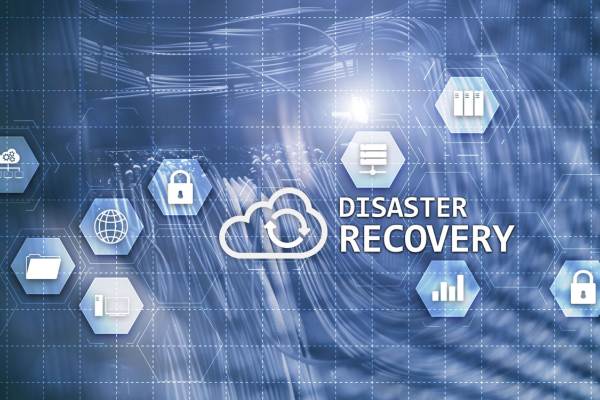
The storage and utilization of data has become an essential part of many modern businesses. As companies rely more on data for day-to-day operations, the solutions used to store data are becoming a serious point of vulnerability. Even a minor mishap like a lost password or a local server hard drive failing out can disrupt operations, leading to financial or even reputational damage.
Some level of risk is always going to be present. However, being proactive with your risk mitigation and adopting cloud-based disaster recovery (DR) strategies will make it easier for your business to bounce back after any data loss event. The relatively recent development of mature, affordable cloud computing solutions has made DR even simpler, permitting business continuity even in circumstances that would have once resulted in a prolonged disruption of operations.
There is still very much a place for on-premises disaster recovery solutions. However, most businesses interested in cutting costs will probably be interested cloud or hybrid DR technologies. Also, adopting cloud technology into a DR strategy is not just about the cost, but also the following benefits:
- Reduced Recovery Time Objectives (RTO) and Alignment with Recovery Time Actuals (RTA)
Traditional disaster recovery systems often face a gap between their intended Recovery Time Objective (RTO) and their Recovery Time Actual (RTA), the actual time it takes to recover from an incident. Modern cloud DR solutions like Quorum.com uses the latest technology and hardware help close the RTA RTO gap by boosting backup and recovery speeds while also adding another layer of redundancy. This effectively removes the need for slow manual interventions during data loss events and protects you when your onsite servers are all compromised in a disaster.
- Better Cost Efficiency
One of the biggest impacts of cloud computing on disaster recovery is how cost-efficient it’s made DR. Until cloud is cost efficient and wide available, DR solutions required heavy upfront investments in physical hardware as well as IT resources to keep it running. Allocating just the right investment in hardware and staff can be difficult, which often meant that even the best-managed traditional DR solution was always slightly overbuilt or underbuilt.
Most modern cloud-based DR solutions, on the other hand, have more flexibility when it comes to sizing, thereby reducing capital expenditure or wasted capital expenditure. This flexibility makes DR accessible even for small and medium-sized businesses that couldn’t previously afford effective DR solutions.
- Easier Scalability
Using the cloud also means easier scalability compared to traditional systems. There’s no longer any need for expanding businesses to hire more IT personnel or invest in more hardware—all a business needs to do to expand its DR capacity is to update its plan with the DR vendor. Likewise, companies that need to scale down their requirements or want to transfer some of their DR capabilities to onsite solutions can simply choose a plan that more closely aligns with their anticipated needs.
- Automated Backups and Recovery
Modern DR solutions typically employ significant automations to quickly close gaps in RTO and RTA, like how Quorum helps businesses recover from an IT outage in one-click. Legacy recovery frameworks are often dependent on humans to both detect data losses and initiate mitigation and recovery procedures, making bouncing back from a disaster a slow and often error-prone process.
In contrast, cloud services can leverage their specialization and economies of scale to efficiently which allows for data replication across different locations, ensuring that backups are always up to date. In the event of a disaster, these systems are ready to initiate recoveries.
- Geo-Redundancy
Cloud computing also frees businesses from geographic restrictions that can impede their data recovery. Cloud service providers maintain data centers in various geographic locations, rendering the data stored in them immune to localized disasters. Compared to typical legacy systems, these cloud-based frameworks provide a level of resilience that will keep data available even in extraordinary situations.
- Effortless Security and Compliance
Cloud providers can also offload much of the responsibility for data security from businesses, which allow them to save costs on physical security implementation and shield them from other compliance risks. Businesses using traditional DR solutions might struggle to meet these stringent security requirements, but cloud environments can provide protection and compliance as a standardized part of their service.
Cloud DR for the Modern Era
Over the decades, cloud computing has evolved to become a truly viable path to disaster recovery for businesses of all sizes. As cloud solutions continue to develop, their benefits in the areas described above are likely to improve even further.




